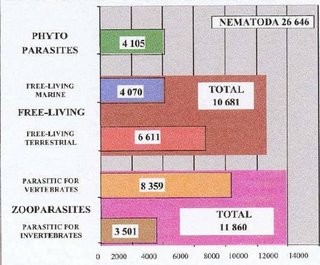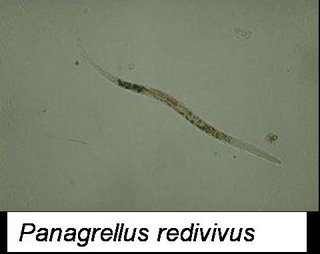I will use a series of posts to talk about this group. So, let me begin with a general overview...
Part 1: Who are the Nematoda?
From the greek nema = thread or line, also known as round worms. This name was used for the first time by the researcher Pott in 1932.
Nowadays exist more than 26 thousand species but this number has been increasing every year. Some number speculations varies from 1 to 100 millions.

The nematodes habit all kind of environments: marine, terrestrial and freshwater; and parasite all levels (plants, invertebrates and vertebrates). Most of the species described are parasites but estimatives show that free-living species are much more numerous than the almost 11 thousand species known until now. One of the many justificatives for this fact is the higher number of nematologists studying parasites when compared with those dedicated to the free-living ones.
The evolutive characteristics which separate Nematoda as a phylum are:
- presence of sensitive structures anteriorly,
- presence of vulva,
- spicule aparatus,
- post embryo development in 4 or more stages.
The closest phylum is Gastrotricha which is also part of meiofauna but is found in lower densities than Nematoda.
The first nematode was discovered in 2500 B.C., the human parasite Ascaris lumbricoides. The free-living ones were discovered in 1656 into the vinegar, more specifically the genus Panagrellus.

High densities of Nematoda make this group the most abundant phylum of metazoarians of our planet... About this the nematologist Cobb made this declaration:
“Iff all matter in the universe except the nematodes were swept away, our world would still be dimly recognizable.
We would find mountains, rivers, lakes and oceans represented by a film of nematodes as well as the location of towns and various plants and animals since there would be a corresponding massing of certain nematodes.” (Cobb in 1914)


No comments:
Post a Comment